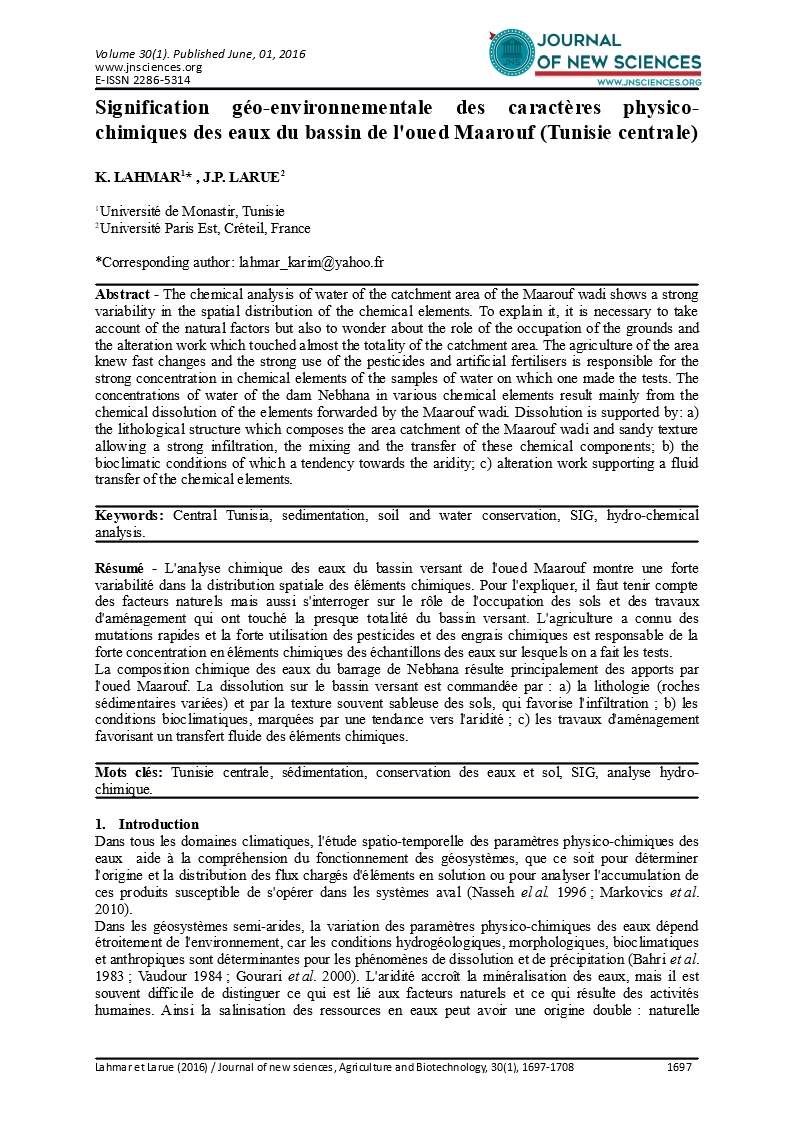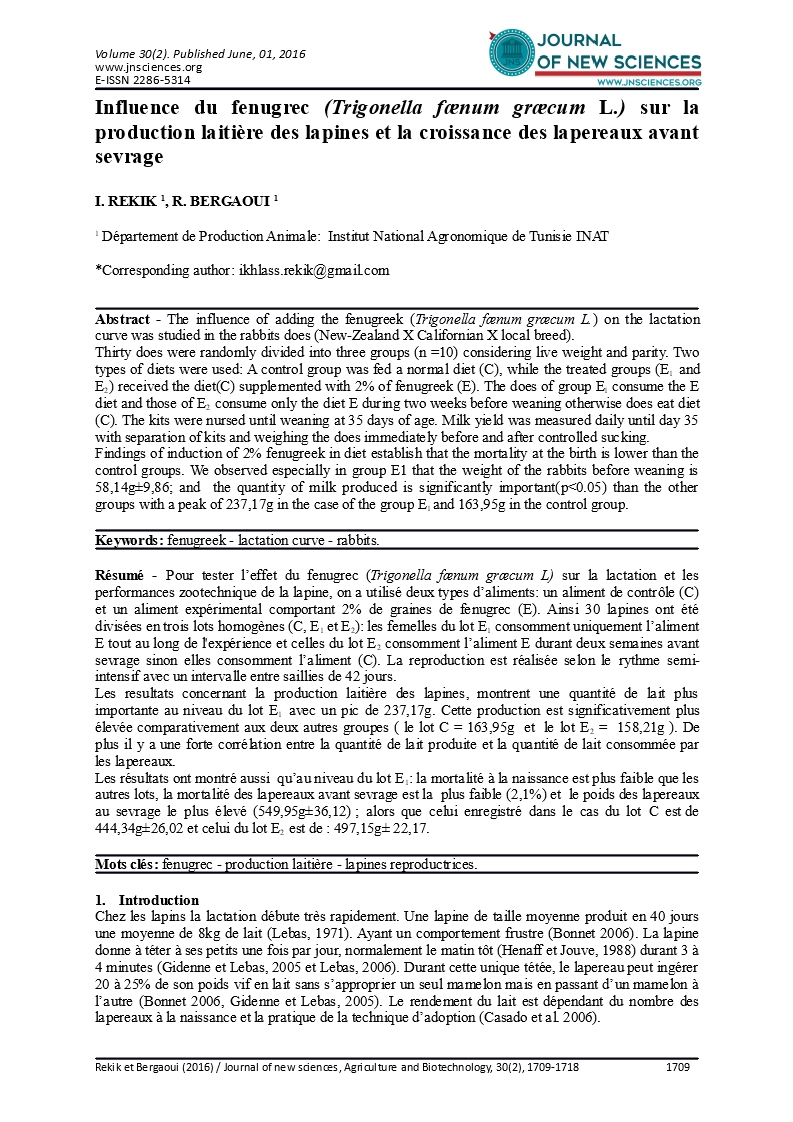- Category: Volume 30
- Hits: 9582
Signification géo-environnementale des caractères physico-chimiques des eaux du bassin de l'oued Maarouf (Tunisie centrale)

K. Lahmar1*
J.P. Larue2
1Université de Monastir, Tunisie
2Université Paris Est, Créteil, France
Abstract - The chemical analysis of water of the catchment area of the Maarouf wadi shows a strong variability in the spatial distribution of the chemical elements. To explain it, it is necessary to take account of the natural factors but also to wonder about the role of the occupation of the grounds and the alteration work which touched almost the totality of the catchment area. The agriculture of the area knew fast changes and the strong use of the pesticides and artificial fertilisers is responsible for the strong concentration in chemical elements of the samples of water on which one made the tests. The concentrations of water of the dam Nebhana in various chemical elements result mainly from the chemical dissolution of the elements forwarded by the Maarouf wadi. Dissolution is supported by: a) the lithological structure which composes the area catchment of the Maarouf wadi and sandy texture allowing a strong infiltration, the mixing and the transfer of these chemical components; b) the bioclimatic conditions of which a tendency towards the aridity; c) alteration work supporting a fluid transfer of the chemical elements.
Keywords: Central Tunisia, sedimentation, soil and water conservation, SIG, hydro-chemical analysis.
Résumé - L'analyse chimique des eaux du bassin versant de l'oued Maarouf montre une forte variabilité dans la distribution spatiale des éléments chimiques. Pour l'expliquer, il faut tenir compte des facteurs naturels mais aussi s'interroger sur le rôle de l'occupation des sols et des travaux d'aménagement qui ont touché la presque totalité du bassin versant. L'agriculture a connu des mutations rapides et la forte utilisation des pesticides et des engrais chimiques est responsable de la forte concentration en éléments chimiques des échantillons des eaux sur lesquels on a fait les tests. La composition chimique des eaux du barrage de Nebhana résulte principalement des apports par l'oued Maarouf. La dissolution sur le bassin versant est commandée par : a) la lithologie (roches sédimentaires variées) et par la texture souvent sableuse des sols, qui favorise l'infiltration ; b) les conditions bioclimatiques, marquées par une tendance vers l'aridité ; c) les travaux d'aménagement favorisant un transfert fluide des éléments chimiques.
Mots clés: Tunisie centrale, sédimentation, conservation des eaux et sol, SIG, analyse hydro-chimique.


